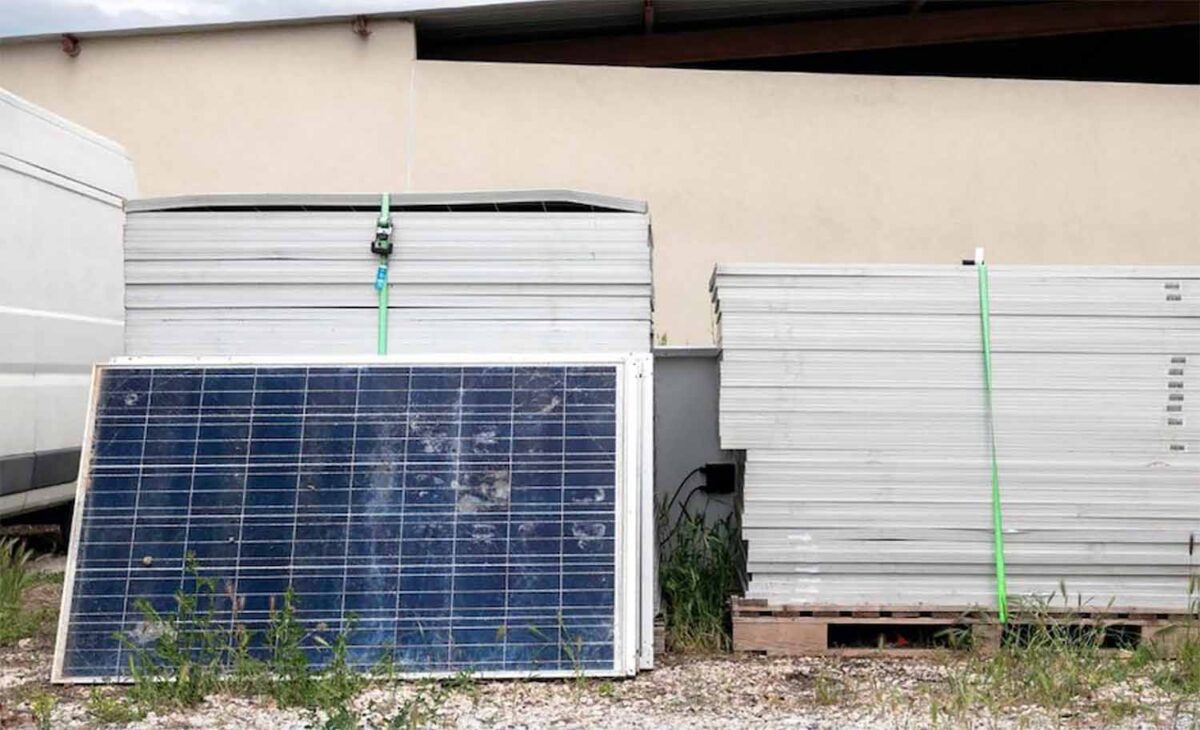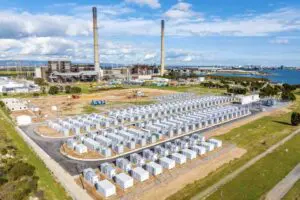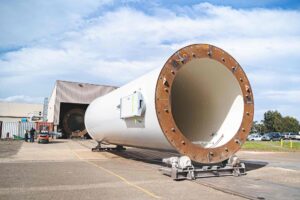Three years ago, the issue of solar “recycling” was thrust into news headlines when then federal environment minister Sussan Ley used a National Press Club speech to put the PV industry “on notice” to find a nationwide solution to end-of-life panel management and avert a looming “landfill nightmare.”
This was a shock to the solar industry; not because it had been avoiding the issue, but because just such a solution had and only just been presented to the federal Coalition by the Smart Energy Council – and had been summarily rejected.
“The Smart Energy Council submitted a comprehensive proposal to the Australian government for a National Solar PV Product Stewardship Scheme, working with the solar industry, recycling experts and leading academics and based on global best practice,” SEC chief John Grimes said at the time.
“That proposal was rejected by the Australian government and we have heard nothing since.”
Three years later, this time backed by the Queensland Labor government, the SEC has launched a solar stewardship pilot, with panel collections underway at an initial eight sites across metro and regional Queensland, including Brisbane, Gold Coast, Sunshine Coast and Townsville.
The pilot, which has a collection scope of of 30,000 modules, is designed to test the feasibility of collection, re-use and recycling of solar panels from rooftops and solar farms and inform the creation of a national stewardship scheme.
The SEC’s product stewardship manager Darren Johannesen says the pilot is also about stimulating the whole end-of-life solar ecosystem.
“Last year, when we first started talking to the recycling ecosystem, there was probably one player in the market … that was collecting modules,” Johannesen told Solar Insiders, the fortnightly podcast by Renew Economy sister site One Step Off The Grid.
“Our current estimate is that by the end of 2025 there’ll be eight companies operating in Queensland, so it’s quite a jump.
“And for the most part …when you talk to the recyclers, they’re not talking about, you know, upcycling, they’re talking about proper materials recovery.”
Working out where the different values lie in end-of-life panels is a big part of the SEC’s work in solar stewardship.
Johannesen says that while upcycling panels – such as separating out some of a panel’s components like the glass and crushing them for use in road surfaces or concrete – has its own merits, the focus should be on reuse and resource recovery.
“We are, as a planet, facing this existential threat of climate change, right? And so the renewable energy transition is critical to to our future.
“And so it’s not so much that these modules are waste, is that these modules provide the materials to get back into the into the manufacturing stream, so that we can continue our work in the renewable energy transition.
“And it’s so it’s absolutely critical for us to recover these materials.
“Silver’s the big thing – silver can be about 40% to 60% of the value out of a recovered model. So it’s valuable. And so, as I said, it’s critical to get that material back.”
Johannesen says this sort of “urban mining,” as it is sometimes called, is already of great interest to large consumer electronics companies – and at least one mystery Australian billionaire – who see material shortages ahead, including of copper, which is another key ingredient of solar panels.
Listen: Solar Insiders Podcast – Reuse, reclaim or recycle?
“The best way for them to secure their supply chain is by setting up their own recycling facilities So increasingly, we’re seeing that happen,” he says.
The other big opportunity, however, is in reuse – where panels that, despite having been “decomissioned” from their first installation, have plenty of life left in them and no real reason – apart from regulatory – why they should not keep generating power.
“The research that we’ve got at the moment is that the average age of a decommissioned solar module is eight years. So they’re young,” Johannesen says.
“And I … don’t want to misquote the statistics, but it’s more than 80% of solar modules that have been tested so far in studies in the past are in perfect operating order – so a big chunk of them.
“And so what’s happened is – and it’s a … contentious part of the market – there’s been a sector of the market that’s grown up which is consolidating solar modules and sending them offshore for reuse.
“There’s a whole lot of policy and regulatory problems with reuse in Australia and and so they consolidate these modules and sell them offshore.
Johannesen says the SEC’s estimates are that out of the roughly 1.2 million solar modules a year currently being decommissioned in Queensland, about 60-70% of are being consolidated and shipped offshore.
“It’s a lot. …Our estimates are that that market in Queensland is probably …worth around about $40-$50 million,” he tells Solar Insiders.
“And it has this unintended side effect of decreasing the cost of new installations, which sounds a bit strange, but …how that market operates, generally speaking, is that the reuse companies will have a relationship with deinstallation companies, and they’ll pay for the good modules.
“They’ll pay their deinstaller for the good modules and and that money tends to be used to decrease the costs of deinstallation and therefore decrease the costs of new systems.
“So in Queensland, we estimate that’s a subsidy for about $15 million which actually is, is quite a lot of money within one single market.
“If you nationalise that number, it’s… quite a large number. So it’s a really interesting part of the market.
“But as I said, it’s quite contentious, because people don’t like the fact that these modules will often go to newly industrialised nations like Africa or some Pacific Islands, and those those markets don’t have downstream processing, so no recycling, typically.”
Johannesen says one of the projects the SEC is working on, also in conjunction with the Queensland government, is a policy regulatory framework in panel reuse.
This includes a “desk study” – the results of which will be announced later this month – of the world’s largest test of decommissioned modules; 5,000 modules from multiple different sources, to firm up the numbers and the quality of that stream of materials.
For now, however, the Queensland pilot will make a start on the coordinated collection of tens of thousands of used solar modules and work through the numerous logistical and economic problems getting in the way of a functional national solar stewardship scheme.
“This is a pilot, not a scheme,” Johannesen stresses. “It’s important to talk about that, because a pilot’s job is to ask questions.
“The questions we’re asking, the answers will inform the national stewardship scheme, which [the federal government] are working on in the background. And hopefully we’ll have some policy announcements about that later.
“So we’re collecting solar modules, we’re going to have an end-to-end software program, so we’ll understand where the where the modules are decommissioned, and why, and …where are they dropped off to, when they’re collected and when they sent to a recycler.
“[We’re trying to] understand industry stocks and flows and then, when they’re recovered, what materials are recovered. And that’ll give us a really good insight into, you know, the flows and the costs of those flows, and the efficiencies that we can gather as a result of that.”
Another major focus of the pilot will be on costs; understanding where the biggest costs lie – early intelligence suggests it is in the logistics of product recovery and storage of panels – and working out who will pay those costs.
“A lot of recyclers enter and exit the market. A lot of collection companies enter and exit the market because they can’t make a profit. And so one this is one of the worries,” Johannesen says.
“It’s expensive, and the expense is in the logistics, mostly… There needs to be a mechanism to to deal with the cost of the product recovery and also to deal with the cost of the logistics, and to deal with the cost of operations.
“Who’s going to pay? Is always the most difficult question.”
But Johannesen says the answer to that question is actually pretty clear – it will be the solar manufacturers who pay, through some kind of levy that is imposed and regulated through a nationwide and hopefully mandatory scheme.
“So everything that’s imported will attract a levy, and everything that’s manufactured in the country will attract a levy …every manufacturer, every importer … will all have to contribute and it goes into a central fund, and then that fund divvies up cash based on the quality of the materials recovered.
“I think that’s the idea that the federal government are considering for solar, using that mandatory scheme, rather than a co-regulatory arrangement,” he says.
“Certainly though, I will be …shocked if they decided to do a voluntary scheme.”
And while these finer details of a regulated national stewardship scheme have yet to be nutted out, Johannesen says the industry is committed to doing the right thing – as it was three years ago when “put on notice” by Ley.
“That specific comment, I must admit, stuck in my throat because I had worked on at least three proposals, previous to my time with the Smart Energy Council, on trying to stand up a stewardship initiative.
“And so, yeah, to hear that the industry you know, needed to get their act together was a bit of a shock.
“I think, in the last proposal that I was involved with, which was with the Smart Energy Council, I think we had 80 organisations involved in that. So, yeah, a bit of a shock.
“I think for the most part, the industry is very committed to doing the right thing in terms of materials recovery, and we’ve actually got a lot of innovation occurring across the whole ecosystem in materials recovery,” he says.
“Solar modules are pretty processable. We can… recover most of the materials. We have the technology, but it’s going to take time to roll it out.
“The recycling ecosystem is very exciting. There’s a lot of investment. It’s growing and getting better every day. So I mean, it’s a really good news story.”










